During the 1990s, the focus on endurance races shifted from the incredible Group C prototypes to cars derived (in theory, at least…) from street legal supercars, the so-called GT1. Several famous manufacturers were involved, such as Lotus, McLaren, Porsche, Mercedes-Benz, Nissan, Toyota, and small sports car manufacturers as Lister, Panoz and Marcos were involved in the competitions as well. However, the high costs for the development of a racing car that also respected the rules for street cars and the dominance of Mercedes between the 1997 and 1998 seasons caused other automakers to abandon the competition, in the same style as had happened few years before when the C Group crumbled.
In the United Kingdom, the so-called Privilegè GT took place, a national-level championship that adopted the GT1 regulations, and which was dominated by Porsche, McLaren and Lister models, but with the participation of cars built by small low volume manufacturers such as Quaife and Harrier. The last one came under the control of the owner of the computer systems company Evesham Micros, the Englishman Richard Austin. From 1994 onwards Harrier LR9C cars competed, equipped with engines derived from those used by the Ford Sierra, with turbochargers. However, the new cars from McLaren, Lister and Porsche, with their large naturally aspirated 6 and 7 liter engines and 3.2 turbocharged engines proved to be far beyond the capabilities of the Harrier. In order to continue to be competitive against these new cars, bigger and bigger turbos were installed, but then the ranges of useful power and torque were limited, reducing the drivability of the cars in medium and low stretches, very common in English racetracks. In addition, the very conception of the Harrier as a race car was already obsolete in the face of the homologation specials that had become the standard at that time.
![Apesar de ter sidocompetitivo por vários anos, em 1998 o Harrier LR9C e o pequeno motor Cosworth sentiam o peso de concorrentes mais modernos. Fonte: PistonHeads [1].](https://nivelandoaengenharia.com.br/wp-content/uploads/Harrier-LR9C.jpg)
As the name Harrier was licensed by Ford, which began to put obstacles to its use, the new model that was born also adopted a new name, and thus Sintura Cars (Sintura being an anagram for R. Austin), and the model S99 designed by the company itself under the direction of engineer Phil Bourne. Initially the car would have a tubular structure and only the carbon fiber body panels, but as there was already more carbon than steel, it ended up making sense to invest in a complete carbon fiber monocoque.
![A silhueta do Sintura S99 é uma mistura de influências de carros do Grupo C2 e dos GT1. Fonte: GTPlanet [2].](https://nivelandoaengenharia.com.br/wp-content/uploads/sintura_s99_gt1.jpg)
The construction was carried out by Lola Cars, simply because it had a window in its manufacturing scale, and for convenience several suspension components and the gearbox also came from the famous English manufacturer. The engine chosen was a 4-liter Judd GV4 V10, capable of producing 700 HP, but with the intake restrictors it yielded “only” 660 HP. Derived from the Judd V10 engines used in F1 in the early 1990s and bearing many similarities to the Judd EV V8s of the F3000, the GV4 engines had rev-cut at 11,500 rpm, well below the 16,000 rpm limit of that F1 versions reached, and made possible the use of the engine as a structural member, something that put them at an advantage even in relation to the large automakers, who often used engines derived from the production ones.

As a result, Sintura Cars planned to sell each complete unit at a price of US$630,000, a price competitive with prototypes from Lola and other companies. However, the demise of the GT1 as a category in 1998 ended up rendering the model obsolete before it even started it’s first race, although the car remained eligible for competition under the LMGTP category which received the Toyota GT-One and others in 1999.
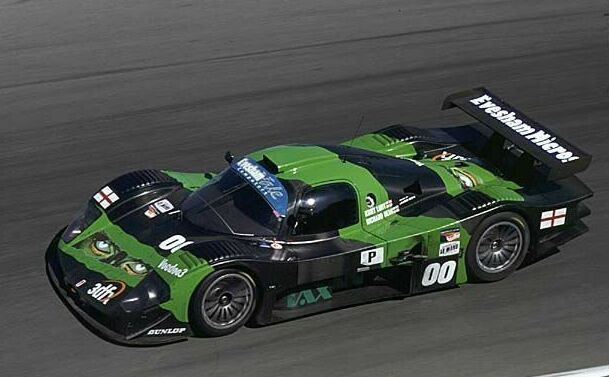
Even so, one car was completed and raced in the 1999 British championship driven by Britons Richard Dean and Kurty Luby, debuting on the fourth round at the famous Brands Hatch track and retiring due to an engine overheating. In the following rounds at Silversotone and Donington Park the performance proved to be competitive, finishing both races in third place, behind only a Porsche 911 GT1 and one of the factory Lister Storm GTL in both cases. In the seventh round (a double round at Donington) another retirement occurred, this time when the car was in the lead after an accident with a backmacker three laps from the end of the race. In the eightheth round came the season highlight, with a win at Silverstone over the factory Listers, in addition to some McLaren F1 GTR and Porsche GT1. In the ninth round there was again a retirement, due to a breakdown in the transmission, and in the tenth round in Spa a second place just 8 seconds behind the winner. In addition to the British championship, the S99 also participated in the seventh round of the American Le Mans Series at Laguna Seca, entered in the LMP category, where it achieved seventh place against cars such as the BMW V12 LMR and Panoz LMP-1 Roadster.
![Nessa imagem podemos ver o S99 durante a disputa da etapa de Laguna Seca da ALMS. Fonte: GTPlanet [2].](https://nivelandoaengenharia.com.br/wp-content/uploads/1999ALMSLagunaSeca_jb_0002.jpg)
Currently the car is part of the collection of Australian David Dicker, who among other businesses is the owner of Rodin Cars. As of 2024, Rodin Cars has announced the revival of the Sintura, now as a track only car that will also race in the Pro class of the World Time Attack Challenge.
Aerodynamics
The aerodynamics of the GT1 cars were considerably limited at the time, and the regulations aimed for the LMP1 to be the top category. This just didn’t happen because the same regulation allowed the GTs to use more powerful engines (600 HP vs 500 HP in the prototypes), and fuel tanks with greater capacity, which helped balance things out. If initially the GT1 was aimed at race-adapted street cars, it didn’t take long for automakers to realize that they could flip the logic and manufacture a prototype to then homologate it for the streets, taking advantage of the benefits that the regulation allowed for GTs.
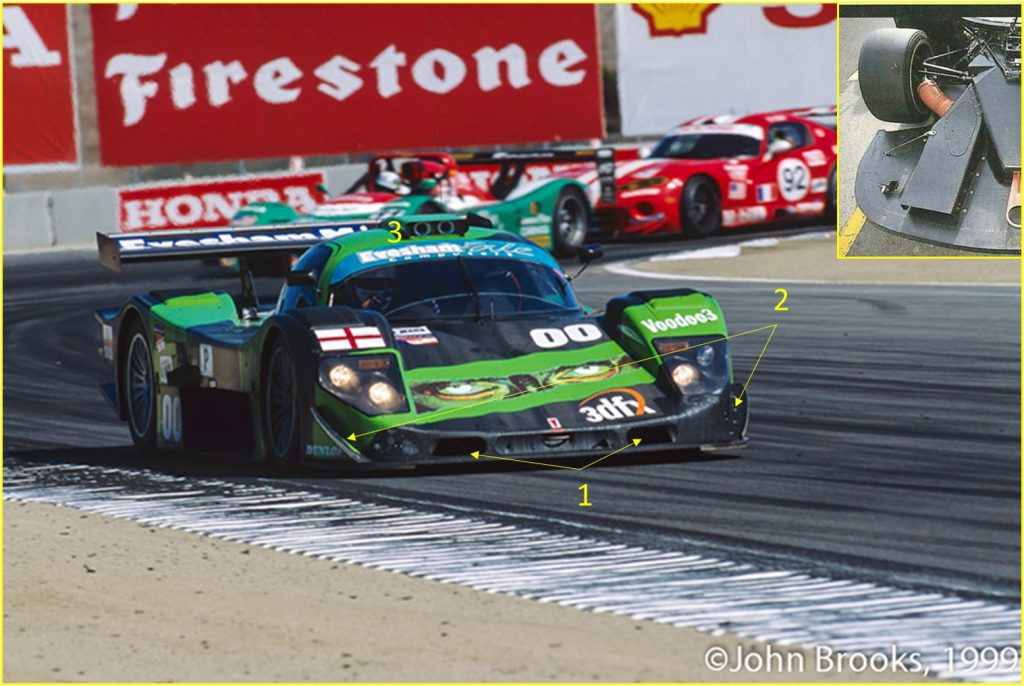
This way, the aerodynamics of these cars were relatively simple, although several manufacturers took the regulation to the extreme. As we can see in the front section of the Sintura, there are two outlets (1) that supply two venturis that make up the front diffuser (detail), and also take air to the front brakes. We can also see the canards (2) and the air intake for the Judd V10 engine (3).
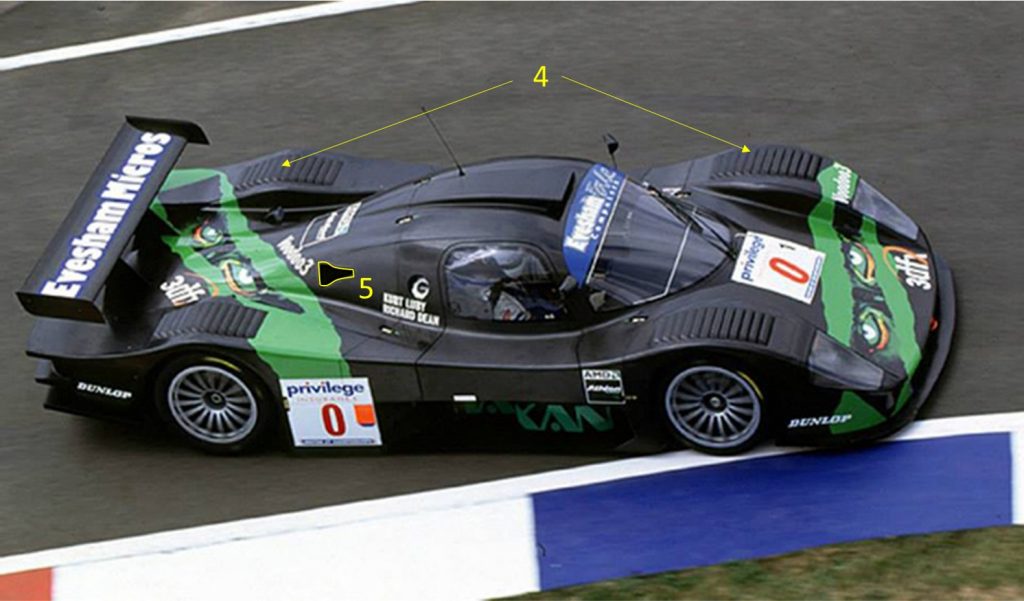
The profile of the British car stands out for being low and slender, with louvers venting the front and rear wheel housings (4), and a NACA socket (5) positioned on the engine cover. The radiators are placed on the sides of the cockpit, receiving air admitted through the front ducts.
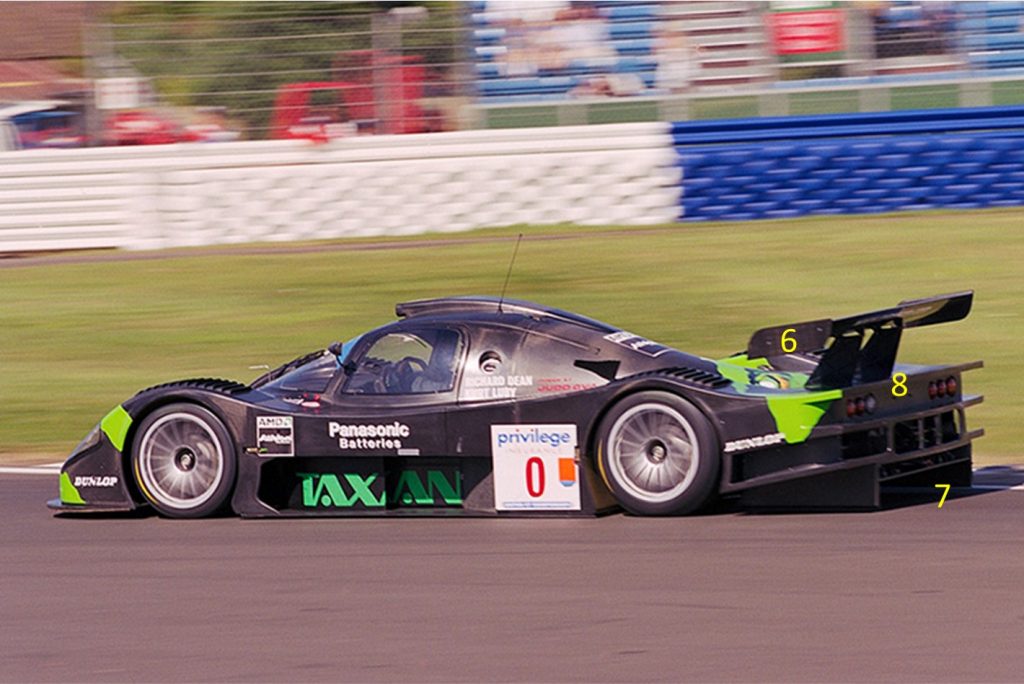
The GT1 regulation also stipulates a single-element rear spoiler and moderate dimensions (6), in addition to considerably limiting the dimensions of the rear diffuser (7). The solution found by the builders, also present in the Sintura, was to create long tail fairings with an integrated rear spoiler (8), using the entire rear section to squeeze as much downforce as possible.
Results:
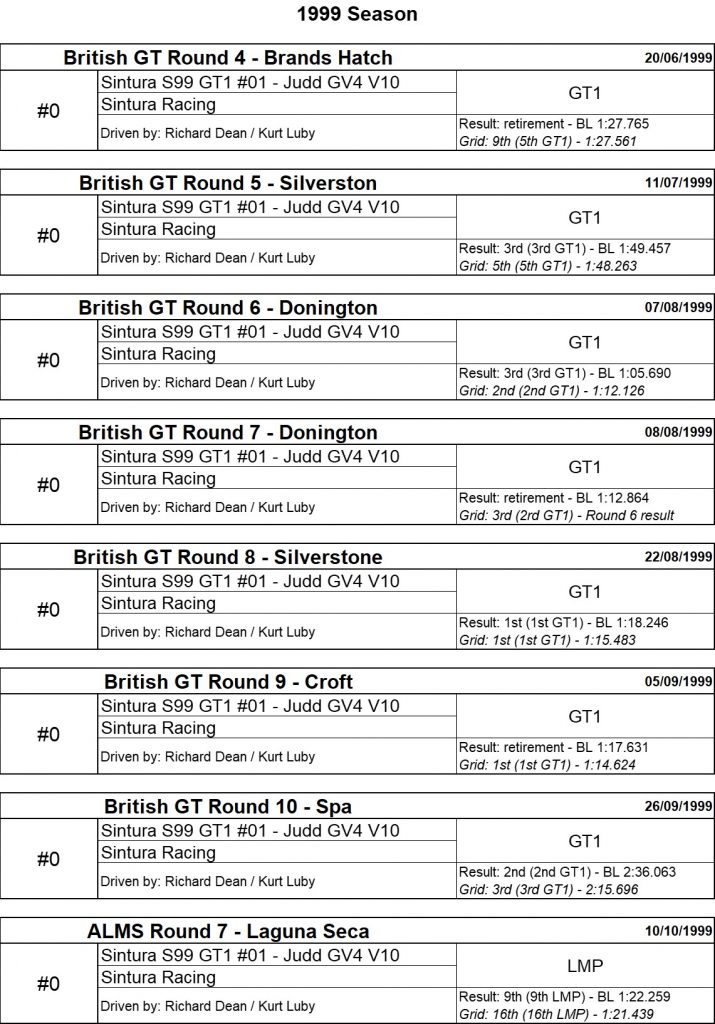
You may also be interested in:

Metalmoro JLM AJR (2017 – )
Currently the fastest prototype in Brazil, the AJR was developed by JLM Racing, and since its debut on the tracks it is the fastest competition car in every race, currently holding the record for national cars at Interlagos and the general record for all racetracks where it competed.
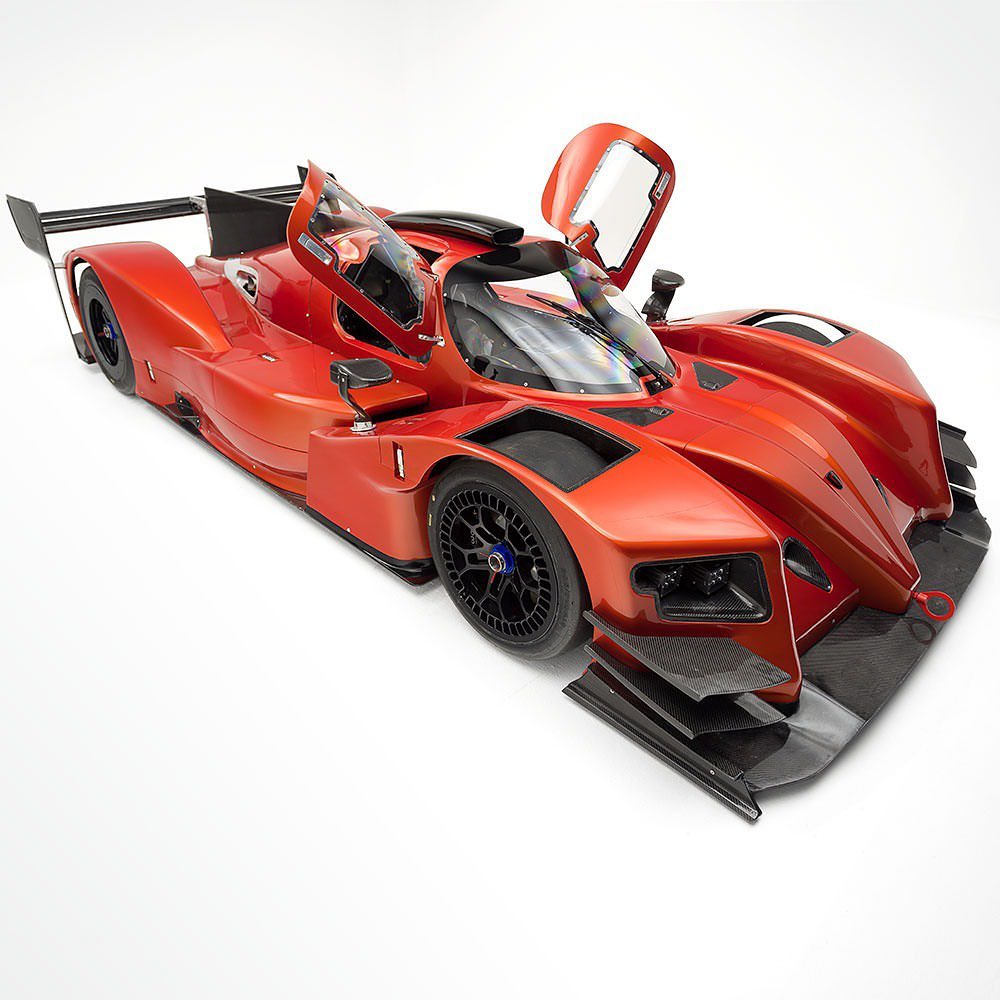
Leal Race Cars LR01 (2021 – )
The Colombian prototype represents a milestone in the neighboring country’s competition car industry, combining performance at a relatively affordable cost.
Sources:
Sinturion. Cars and Cars Conversions Magazine, december 1999.
Harrier. Available at: http://www.gtracecaratoz.webeden.co.uk/#/harrier/4566390578. Acessed in: 17/09/2016.
GT Planet: Sintura S99 GT1 1999, pg. 1. Available at: https://www.gtplanet.net/forum/threads/sintura-s99-gt1-1999.318077/. Acessed in: 18/09/2016.
Britishi GT Championship. Available at: http://www.racingsportscars.com/championship/British%20GT.html. Acessed in: 18/09/2016.
1999 Monterey Sports Cars Championships. Available at: https://en.wikipedia.org/wiki/1999_Monterey_Sports_Car_Championships. Acessed in: 18/09/2016.
Richard Dean On The 1999 Sintura S99. Available at: http://www.dailysportscar.com/2020/05/13/richard-dean-on-the-1999-sintura-s99.html. Acessed in: 12/03/2022.
Images:
[1]: Taken from: Piston Heads: Weird Car Facts, pg. 38. Available at: http://www.pistonheads.com/gassing/topic.asp?h=0&f=23&t=959362&i=740. Acessed in: 18/09/2016.
[2]: Taken from: GT Planet: Sintura S99 GT1 1999, pg. 1. Available at: https://www.gtplanet.net/forum/threads/sintura-s99-gt1-1999.318077/. Acessed in: 18/09/2016.
[3]: Taken from: Richard Dean On The 1999 Sintura S99. Available at: http://www.dailysportscar.com/2020/05/13/richard-dean-on-the-1999-sintura-s99.html. Acessed in: 12/03/2022.
[4]: Taken from: Judd GV 4 liter V10. Available at: https://juddpower.com/our-engines/judd-gv-4-litre-v10/. Acessed in: 12/03/2022.

